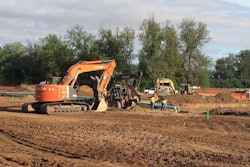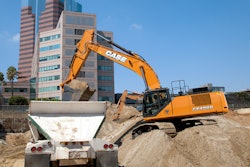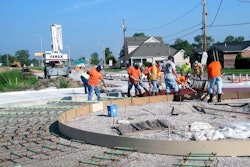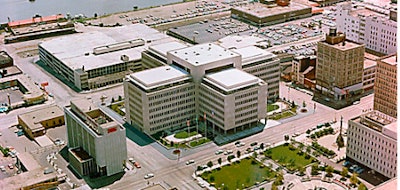 Long a downtown Peoria presence: Cat’s headquarters building as it looked when it opened in 1967. Source: cat.com
Long a downtown Peoria presence: Cat’s headquarters building as it looked when it opened in 1967. Source: cat.comThe rumors had been rumbling for years, but Cat’s surprise announcement last Tuesday that it would be relocating its global headquarters from Peoria to the Chicago area has generated lots of comments, ranging from accusations of broken promises to “hey, that’s capitalism” shrugs.
Although Cat says the move will only involve 300 jobs, and that it will be leaving the bulk of its investment in Peoria right where it currently is, it was hard for Peorians not to take it personally.
Peoria is a company town, one that for more than 107 years has been strongly identified with Cat, which now employs roughly 12,000 in the area. In 2015, the company had announced it was building a three-tower headquarters spanning six city blocks along the Peoria riverfront. Later that same year, Cat said it was postponing those plans. Now, the glass-and-steel vision has been permanently mothballed.
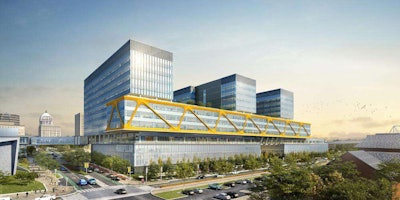 What will never be: The Cat Peoria headquarters building announced in 2015.
What will never be: The Cat Peoria headquarters building announced in 2015.While Peoria city and county officials put on a brave face with lets-look-at-the-big-picture statements, area legislators were not so sanguine. “This, in some ways, is a betrayal of our community and in complete disregard for the hard-working employees and citizens of Peoria,” said state Congressman Darin LaHood, who along with other area officials was surprised by the announcement. In a thoughtful editorial calling Jan. 31st a “somber day,” the Peoria Journal Star recalled that just two years ago, when unveiling its new headquarters design, then-CEO Doug Oberhelman said, “Caterpillar will stay in Peoria. I repeat, we will stay in Peoria.”
This @pjstar extra edition on @CaterpillarInc decision to move headquarters out of #Peoria will hit the streets soon. pic.twitter.com/TuENAzlp3k
— Matt Buedel (@JournoBuedel) January 31, 2017
But that was then, this is now. Oberhelman has been succeeded by Jim Umpleby, who clearly has a new agenda.
“Locating our headquarters closer to a global transportation hub, such as Chicago, means we can meet with our global customers, dealers and employees more easily and frequently,” Umpleby said in announcing the move. Many of the comments following news reports pointed their finger at another reason: it’s easier to recruit tech-savvy job candidates to major metros than to a town of 374,000.
The Peoria Journal Star openly speculated that they’re not the only ones: Umpleby and his executives also wanted to live elsewhere, posits writer Nick Vlahos.
Don’t be surprised that Cat opted for the big city, says Justin Fox with Crain’s Chicago Business. “Economic trends generally aren’t going the way of such places,” he says, noting that metro areas with more than 500,000 people experienced a 1.7 percent employment growth in 2016, while the rest of the country just saw 0.7 percent growth. In addition, Fox says, “If moving the headquarters to Chicago and making it easier for executives to fly around the world to drum up new business helps Caterpillar, it might help Peoria, too. Still, the move feels like a microcosm of a larger political and economic trend that has been pulling the country apart.”
Austin Berg, senior writer for the Illinois Policy initiative, echoes the tale-of-two-cities theme. Even though the Cat move is purportedly just for high-level execs and their support staff, watch out, Berg says. “Caterpillar’s relocation may not immediately affect manufacturing workers. But they’re being pummeled regardless. And Springfield isn’t listening.”


